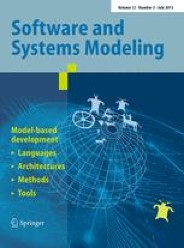Publications

With our publications we cover the most diverse research areas that arise in the field of man, task and technology. In addition to traditional Business Information Systems topics such as knowledge management and business process management, you will also find articles on current topics such as blended learning, cloud computing or smart grids. Use this overview to get an impression of the range and possibilities of research in Business Information Systems at the University of Duisburg-Essen.

Type of Publication: Article in Journal
Multi-level modeling: cornerstones of a rationale
- Author(s):
- Frank, Ulrich
- Title of Journal:
- Software & Systems Modeling
- Number of Issue:
- 21
- pages:
- 451-480
- Publication Date:
- 2022
- Digital Object Identifier (DOI):
- doi:10.1007/s10270-021-00955-1
- Fulltext:
- <a href="/fileadmin/fileupload/WI-UMO/Frank2022_Article_Multi-levelModelingCornerstone.pdf" class="pdf">Multi-level modeling: cornerstones of a rationale (2.80 MB)</a>
- Link to complete version:
- https://link.springer.com/article/10.1007/s10270-021-00955-1
- Citation:
- Download BibTeX
Abstract
This expert voice paper presents a comprehensive rationale ofmulti-levelmodeling. It aims not only at a systematic assessment of its prospects, but also at encouraging applications of multi-level modeling in business information systems and at providing a motivation for future research. The assessment is developed from a comparison of multi-levelmodelingwith object-oriented, general-purpose modeling languages (GPMLs) and domain-specific modeling languages (DSMLs). To foster a differentiated evaluation, we propose a multi-perspective framework that accounts, among others, for essential design conflicts, different types of users, as well as economic aspects. Besides the assessment of the additional abstraction offered by multi-level modeling, the evaluation also identifies specific drawbacks and remaining challenges. Based on the results of the comparative assessment, in order to foster the adoption and further development of multi-level modeling, we discuss the prospects of supplementing multi-level modeling languages with multi-level programming languages and suggest possible dissemination strategies customized for different groups of users. The paper concludes with an outline of future research.
